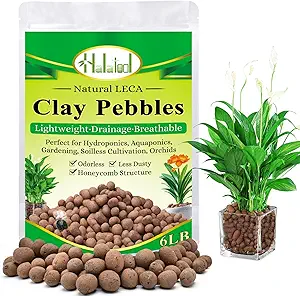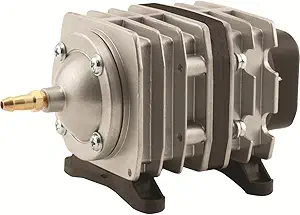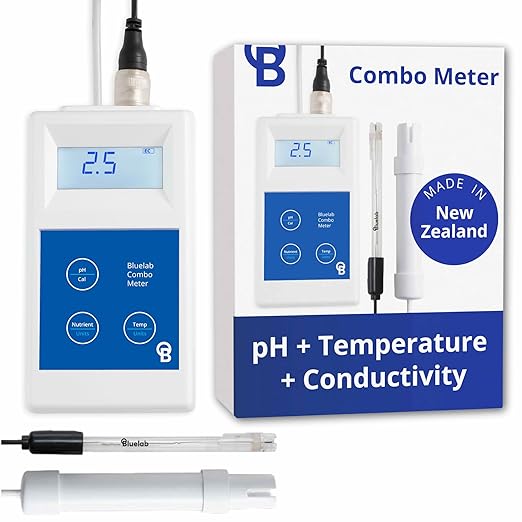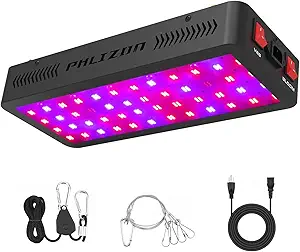Ultimate Guide to Growing Tomatoes with Hydroponics: Juicy Results Made Easy
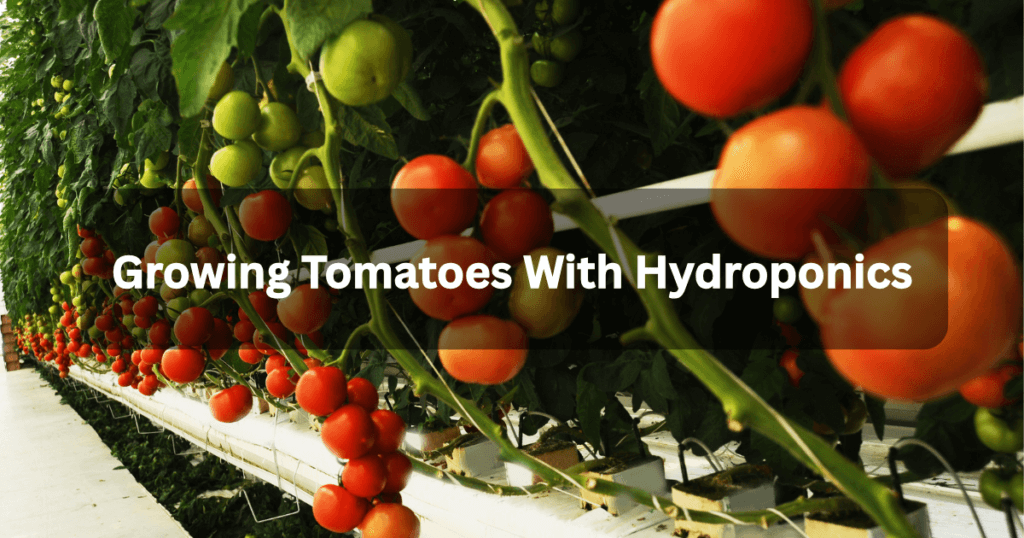
Some of the links in this post are affiliate links. As an Amazon Associate, we earn a referral fee from qualifying purchases—at no extra cost to you.
Looking to grow the juiciest, most flavorful tomatoes without touching a single grain of soil? You’re in the right place. Growing tomatoes with hydroponics is not just a cool science project—it’s a revolutionary way to garden smarter, faster, and with fewer headaches. Whether you’re in a high-rise apartment or want to maximize yield in a small greenhouse, this method makes tomatoes pop with color, taste, and nutrition.
Ready to harvest amazing results? Let’s dive into everything you need to know to master the art of hydroponic tomato growing.
Table of Contents
Why Growing Tomatoes with Hydroponics Is a Game-Changer
Say Goodbye to Soil: The Hydroponic Advantage
Let’s be honest—soil is messy, inconsistent, and often riddled with pests and diseases. Hydroponics eliminates that whole drama. By growing tomatoes in a nutrient-rich water solution, you take full control over what your plants eat and how they grow. This isn’t just about being clean—it’s about being smarter.
With hydroponics, you’re no longer at the mercy of poor soil quality or unpredictable weather. It’s all about precision.
Better Yields, Faster Growth, and Fewer Pests
Want more tomatoes in less time? Hydroponic systems speed up the growth cycle, often cutting it down by weeks compared to traditional soil gardening. Since you’re optimizing the environment, your tomato plants grow stronger and faster. Even better? Fewer pests. No soil means fewer hiding spots for bugs and bacteria. It’s like growing tomatoes in a VIP suite—luxurious, clean, and well-managed.
Understanding the Hydroponic Tomato Growing System
What Is Hydroponics and How Does It Work?
Hydroponics is all about growing plants using a water-based nutrient solution instead of soil. The roots sit directly in or above this solution, soaking up exactly what they need. It’s kind of like a tomato spa day—every day. These systems typically include a reservoir (to hold water and nutrients), a grow tray or container, a pump, and some form of growing medium like clay pebbles or rockwool to support the plant.
Halatool 6LB Natural Expanded Clay Pebbles — These lightweight expanded clay pellets are ideal for hydroponics and aquaponics, reusable, and pH neutral.
Why Tomatoes Thrive in a Soilless Setup
Tomatoes are hungry plants—they love nutrients, light, and water. Hydroponics lets you deliver all three directly, without the delay or variability of soil. That means:
- More consistent fruit production
- Bigger, juicier tomatoes
- Less chance of soil-borne diseases
Tomatoes also respond well to careful monitoring, which is super easy to do in a controlled hydroponic system.
Best Hydroponic Systems for Growing Tomatoes
Deep Water Culture (DWC): Simplicity at Its Best
If you’re just starting out, DWC is a fantastic option. Plants sit in a net pot with roots submerged in oxygen-rich nutrient water. An air pump keeps oxygen levels high, which tomatoes love.
- Pros: Easy to set up, budget-friendly, great for beginners
- Cons: Not ideal for larger tomato varieties due to weight
EcoPlus Air Pump — This air pump is popular among hydroponic growers for its strong airflow, durability, and quiet operation. It comes with tubing and air stones, perfect for oxygenating your nutrient reservoir.
Nutrient Film Technique (NFT): Constant Flow of Goodness
This setup involves a shallow stream of nutrient solution that flows continuously over the plant roots. It’s efficient and conserves water like a pro.
- Pros: Ideal for smaller tomato plants and tight spaces
- Cons: Needs constant monitoring to avoid clogs or pump failures
Ebb and Flow Systems: A Tried-and-True Classic
Also known as flood and drain systems, these periodically flood the plant roots with nutrient solution and then drain it away.
- Pros: Great for medium to large plants, flexible grow media options
- Cons: Slightly more complex to manage
Choosing the Right System for Your Tomato Variety
Larger, indeterminate plant varieties thrive in systems like ebb and flow or bucket-based deep water culture (DWC), where they have room to grow and ample nutrient access. In contrast, smaller, determinate types are ideal for nutrient film technique (NFT) or vertical hydroponic towers, which support compact growth and efficient space use. Choosing the right system based on your plant’s growth habits ensures healthier development and higher yields. Matching your setup to the plant’s natural structure is key to maximizing productivity and resource efficiency.
Choosing the Best Tomato Varieties for Hydroponics
Determinate vs. Indeterminate: What You Need to Know
- Determinate (Bush): These grow to a fixed height and produce fruit all at once. Perfect if you want a quick harvest and a compact system.
- Indeterminate (Vine): Keep growing and producing all season long. They need support and space, but they give more over time.
Top Tomato Varieties That Thrive in Hydroponics
Some of the best tomato varieties for hydroponic success include:
- ‘Roma’ – Great for sauces and compact enough for smaller systems
- ‘Cherry’ – Sweet, fast-growing, and ideal for vertical setups
- ‘Beefsteak’ – Big and bold, perfect for larger DWC or ebb and flow systems
- ‘Early Girl’ – A quick producer with rich flavor
Essential Nutrients for Growing Tomatoes with Hydroponics
Key Macronutrients and Micronutrients
Tomatoes need a buffet of nutrients to thrive. Key players include:
- Nitrogen (N) – For leafy growth early on
- Phosphorus (P) – Crucial for flowering and fruiting
- Potassium (K) – Helps with fruit size and flavor
- Calcium, Magnesium, Iron – Prevent common deficiencies like blossom end rot
How to Mix and Manage Hydroponic Nutrient Solutions
Use a high-quality tomato-specific hydroponic nutrient mix. Always measure EC (electrical conductivity) and pH levels to make sure your solution is balanced.
- Optimal pH: 5.5 to 6.5
- EC range: 2.0 to 3.5 mS/cm
Refresh your solution weekly and clean the reservoir to prevent nutrient lockout or algae buildup.
Bluelab Combo Meter — Trusted by hydroponic growers worldwide, this meter accurately measures pH, conductivity, and temperature. It’s user-friendly and essential for nutrient management.
Light, Temperature, and Humidity Control
How Much Light Do Hydroponic Tomatoes Need?
Tomatoes are sun worshippers. They need:
- 14 to 18 hours of light per day for optimal growth
- Full-spectrum LED grow lights work best indoors
Make sure your light source is strong enough and positioned close (but not too close) to your plants.
Phlizon Upgraded 600W LED Grow Light — This full-spectrum LED grow light is highly rated for indoor gardening, providing an ideal balance of blue and red light for tomato growth and fruiting. Energy-efficient and dimmable, it’s perfect for hydroponic setups.
The Ideal Temperature and Humidity for Healthy Tomatoes
- Day temperature: 70–80°F (21–27°C)
- Night temperature: 60–70°F (15–21°C)
- Humidity: 50–70% for seedlings, 40–50% during fruiting
Keep the environment stable to avoid stressing the plants.
Step-by-Step Guide to Growing Tomatoes with Hydroponics
Germinating Seeds and Transplanting Seedlings
Begin by selecting high-quality tomato seeds to ensure strong, healthy plants from the start. Germinate them in a moist, warm medium like rockwool cubes or seed plugs, providing consistent humidity and warmth. Once the seedlings develop their first true leaves, they’re ready to be carefully transplanted into your hydroponic system. This early attention sets the stage for vigorous growth and productive yields.
Supporting Plants and Managing Growth
As your tomato plants grow, they’ll need support to stay upright and healthy. Use trellises, tomato cages, or string supports to keep the stems sturdy and prevent sprawling. Regularly prune suckers—the small shoots that grow between the main stem and branches—to direct the plant’s energy toward producing fruit instead of excess foliage. This care encourages stronger plants and bigger, better-quality tomatoes.
Tomato Cage, 48 Inches Tall — A durable, rust-resistant cage that supports large tomato plants, perfect for hydroponic gardens with vigorous indeterminate varieties.
Pollination Tips for Indoor Hydroponic Tomatoes
Tomatoes are naturally self-pollinating, but when grown indoors without wind or pollinators, they need a little extra help. Gently shaking the plants or using a small electric toothbrush near the flowers mimics the vibration bees create, encouraging pollen to move and fertilize the flowers. It might sound unusual, but this simple technique significantly boosts fruit set and yield. With a little buzz, your indoor tomatoes can thrive just like they do outdoors.
Common Problems and How to Fix Them
Nutrient Deficiencies and Toxicities
Yellowing leaves? Curling tips? That’s often a nutrient issue. Regularly check and adjust your nutrient solution. Common issues include:
- Calcium deficiency – Leads to blossom end rot
- Nitrogen toxicity – Causes excess foliage and fewer fruits
Pests and Diseases in a Hydroponic Setup
Although indoor farming reduces many pest problems compared to soil growing, pests like aphids and spider mites can still sneak in. To manage them effectively, apply natural treatments such as neem oil or insecticidal soap, which are safe and environmentally friendly. Always quarantine new plants before introducing them to your main crop to prevent infestations from spreading. Staying vigilant and proactive helps keep your indoor garden healthy and thriving.
Root Rot, pH Imbalance, and Other Pitfalls
Root rot occurs when plant roots remain submerged in water that lacks sufficient oxygen, creating a perfect environment for harmful pathogens. To prevent this, use a reliable air pump to oxygenate the water and keep all equipment clean and sanitized. Regularly monitoring and maintaining the correct pH levels is crucial, as imbalances can cause nutrient lockouts that hinder the plant’s ability to absorb essential nutrients. Consistent care and attention to these factors will help keep your plants healthy and prevent root-related issues.
Harvesting Hydroponic Tomatoes for Maximum Flavor
When and How to Pick Your Tomatoes
Wait until your tomatoes are fully ripe—deep red, or yellow/orange depending on the variety—and have a slight softness to the touch. This indicates they’ve developed their best flavor and sweetness. When harvesting, gently twist each fruit off the vine to avoid damaging the plant or unripe tomatoes. Careful picking helps maintain plant health and ensures you enjoy the freshest, tastiest harvest possible.
- Pro Tip: Picking in the morning gives the best flavor
Storing and Enjoying the Fruits of Your Labor
Store your tomatoes at room temperature to keep their full flavor and juicy texture intact. Refrigerating them can cause the fruit to become mealy and lose its delicious taste. Enjoy your ripe tomatoes fresh in salads, simmer them into rich sauces, or simply savor them straight off the vine—you’ve earned every bite. Proper storage ensures you get the most out of your harvest every time.
Final Thoughts on Growing Tomatoes with Hydroponics
Imagine picking perfectly ripe, sun-kissed tomatoes even in the middle of winter—hydroponics makes this possible by giving you full control over the growing environment, free from seasonal limitations. This means fresh, delicious tomatoes are always within reach, delivering garden-fresh flavor year-round. While growing tomatoes hydroponically takes some learning and patience, the rewards are huge: you get tastier produce, greater control, and a fun, rewarding hobby that pays off with every juicy bite. Ultimately, the effort is well worth it for the joy and freshness it brings to your table.
FAQs – Growing Tomatoes With Hydroponics
1. Can I grow hydroponic tomatoes outdoors, or does it have to be indoors?
Hydroponic tomatoes can be grown outdoors if the climate is stable and equipment is protected from rain, pests, and wind. However, indoor environments offer better control over light, temperature, and humidity, leading to more consistent results.
2. How much electricity does a hydroponic tomato system typically use?
It depends on the system size and components like pumps and LED grow lights. On average, a small to mid-sized hydroponic tomato setup may consume 50–200 kWh per month. Choosing energy-efficient lights and timers helps reduce energy use.
3. Can I use tap water in my hydroponic tomato system?
Tap water can be used, but it’s best to test it first. High levels of chlorine, chloramine, or hard minerals may affect nutrient absorption or pH balance. Using filtered or dechlorinated water is safer and promotes healthier plants.
4. What’s the ideal plant spacing for hydroponic tomatoes?
For indeterminate varieties, allow 18–24 inches between plants to ensure proper airflow and prevent overcrowding. Determinate (bush) types can be spaced 12–18 inches apart in compact systems.
5. Do hydroponic tomatoes taste different from soil-grown ones?
Yes—many growers find that hydroponic tomatoes taste sweeter and more consistent, especially when nutrients are optimized and the growing environment is stable. However, flavor can vary based on variety, lighting, and nutrient balance.
Other Useful Resources Related To Growing Tomatoes with Hydrodponics
1. Hydroponic Tomatoes – A Grower’s Guide – Proponics
This comprehensive guide covers everything from selecting the right hydroponic system to choosing suitable tomato varieties and maintaining optimal growing conditions. It also discusses the importance of pH and EC levels, nutrient solutions, and plant support.
2. Hydroponic Tomatoes: Complete Guide to Growing in Greenhouses
This resource provides detailed information on hydroponic tomato cultivation in greenhouses, covering system selection, variety choice, environmental conditions, and best practices for successful growth.
3. How to Grow Hydroponic Tomatoes (Kratky Method) – How Hydroponics
Focusing on the Kratky method, this guide offers a simplified approach to hydroponic tomato cultivation, ideal for beginners. It covers seed selection, nutrient solutions, and maintenance tips.
4. Grow Hydroponic Tomatoes: A Beginner’s Guide – Hydroponic Living
Tailored for newcomers, this guide discusses seed starting, hydroponic systems, growing mediums, and essential care instructions to help you start your hydroponic tomato journey.
5. Complete Guide To Grow Tomato Plants Hydroponically: 10 Steps For Success – Hydroponic Show
This step-by-step guide outlines the entire process, from system selection to harvesting, with a focus on maintaining optimal conditions for healthy tomato growth.
